
 |
|
|
Forages & Grains
Volume 59 Number 5 Date 05/29/2014 ALFALFA WEEVIL - Larval counts remain unusually low for late May. Alfalfa surveyed in Columbia, Dane, Dodge, Grant, Iowa, Jefferson, Lafayette, Rock, Sauk and Walworth counties contained only 1-4 weevils per 100 sweeps, and 46% of fields sampled still had no apparent larval population. Based on the low number of larvae collected and the fact that alfalfa harvest has started, significant damage should not develop before most first-crop alfalfa is cut, except in rare fields or if harvest is postponed beyond the first or second weeks in June. Regular sampling for larvae and leaf tip feeding should begin at this time and continue through harvest or until the weevil season has passed. PEA APHID - Surveys conducted in the southern half of the state yielded 42-288 aphids per 100 sweeps. The average count for the period of May 22-28 was 159 per 100 sweeps, a marked increase from 30 per 100 sweeps the week before. MEADOW SPITTLEBUG - The first nymphs and spittle masses in alfalfa were observed on May 27. Populations are currently less than two per 100 stems. PLANT BUG - Representative counts are low and range from 2-28 per 100 sweeps. Small nymphs of the tarnished and alfalfa plant bug species are likely to appear in sweep net collections by early June. GRASS SAWFLY - Low numbers of these pale yellow, striped larvae have been found in scattered alfalfa fields. The caterpillar-like worms are the immature form of the grass sawfly, an insect belonging to the bee and wasp order, Hymenoptera. The larvae, which should not be mistaken for armyworms, are suspected of feeding on grasses and pose no threat to alfalfa. -- Krista Hamilton, DATCP Entomologist WHEAT DISEASE - Survey observations in 14 fields in Kenosha, Racine and Walworth counties in the last week found only low levels of disease pressure, with traces of Septoria and tan spot, except in two fields which appeared to be wheat on wheat, where the incidence of Septoria was near 100% and lower leaves had severities in the 2-3% range. Powdery mildew was notably absent from most fields, though two sites showed significant disease pressure. No aphids or cereal leaf beetles were detected in the surveyed fields. -- Adrian Barta, DATCP Pest Survey Program 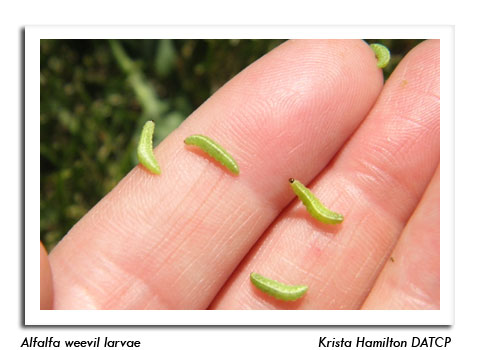
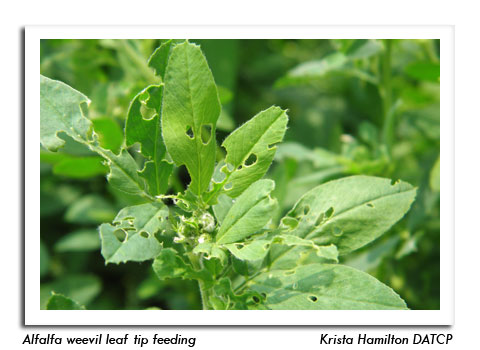
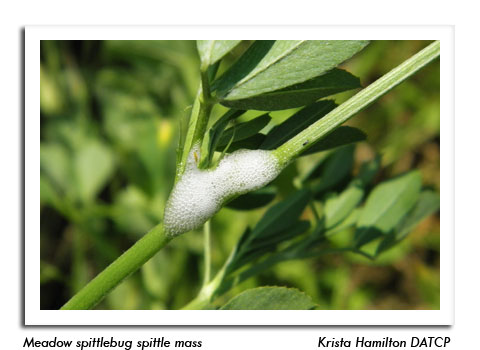

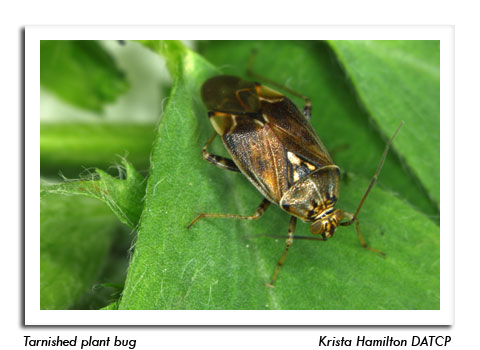
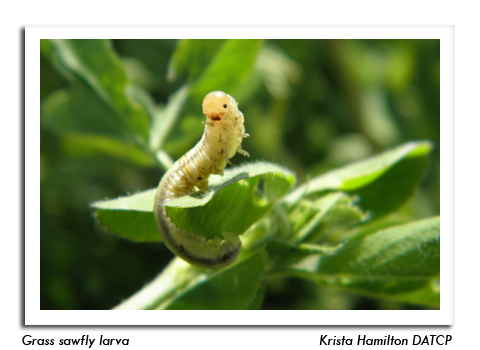
|
|
|